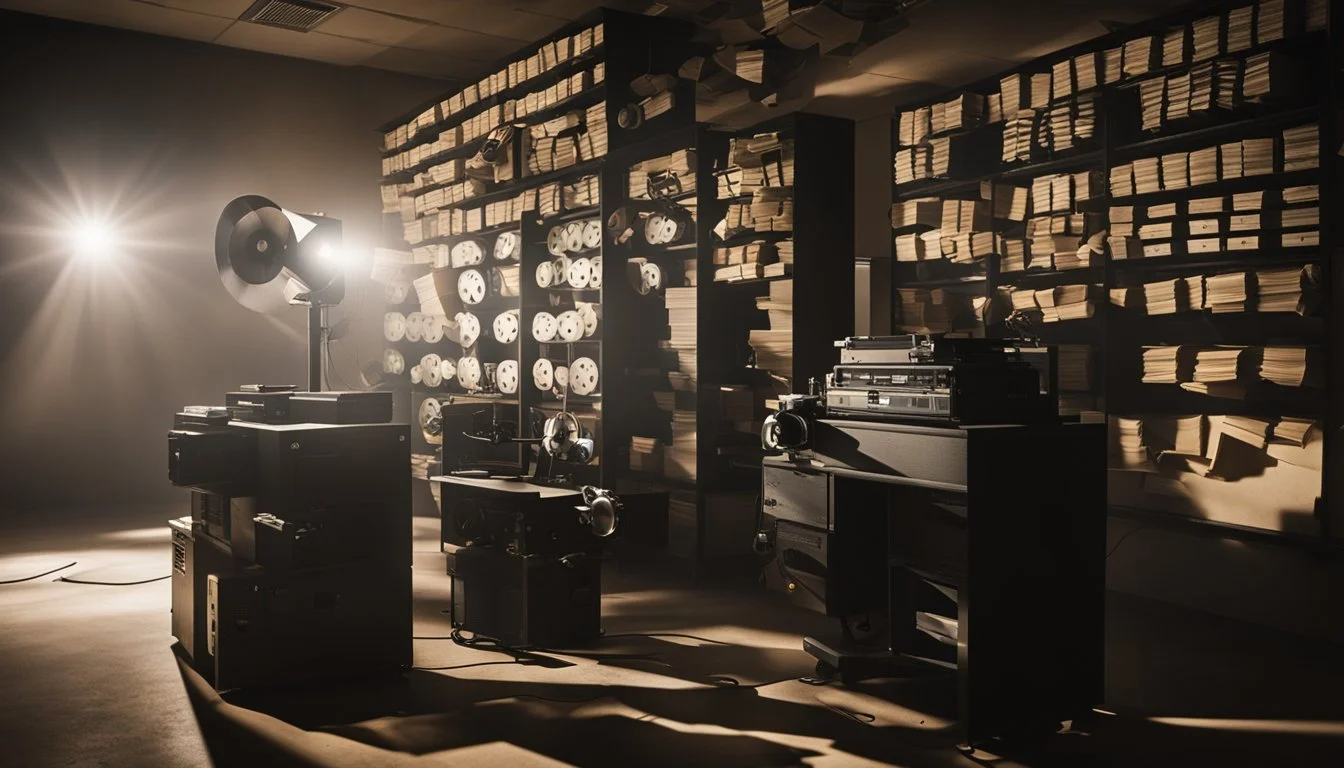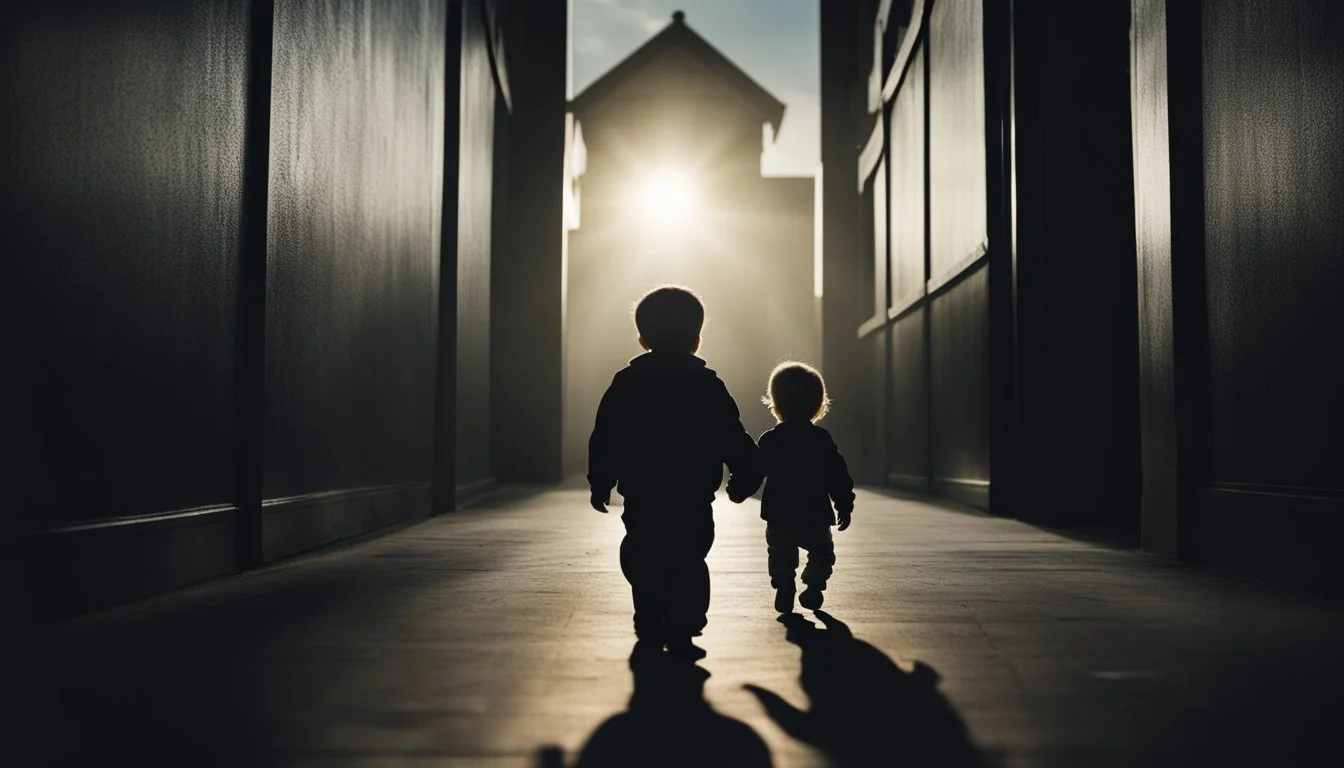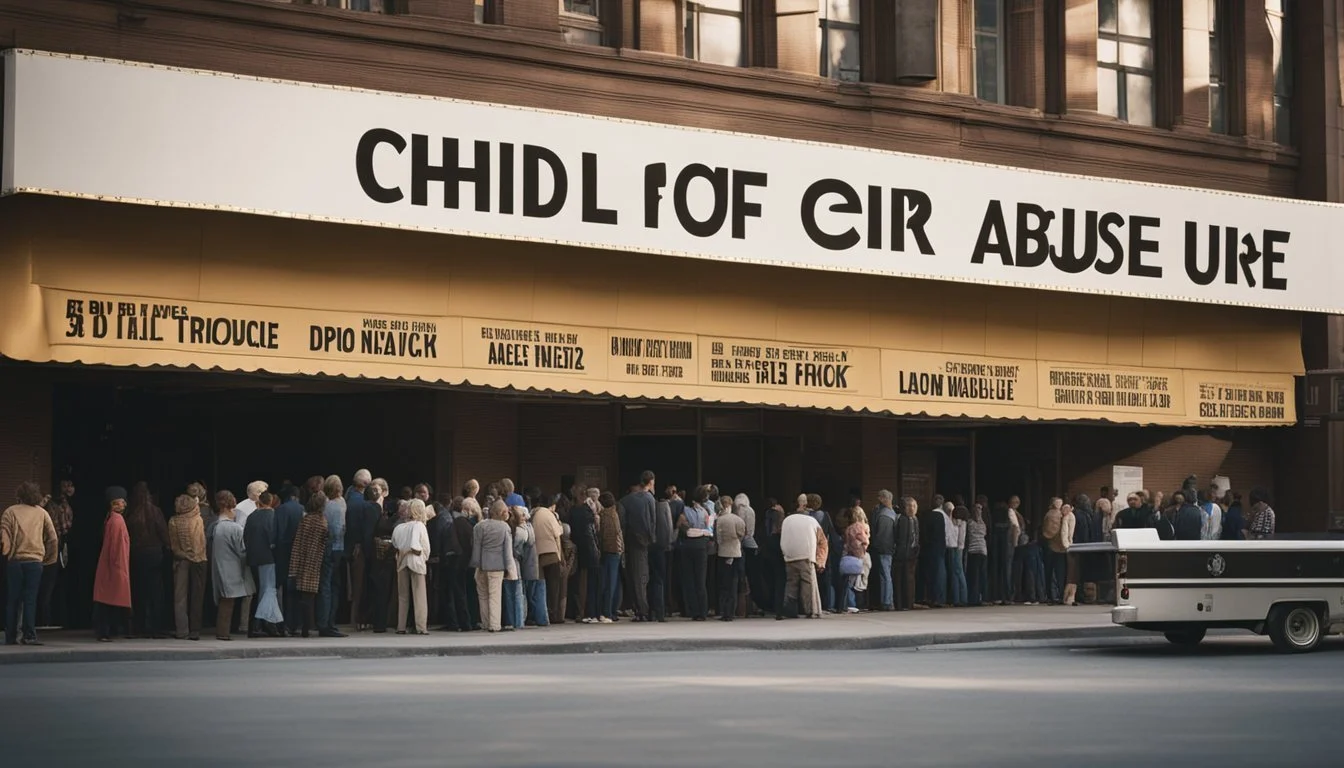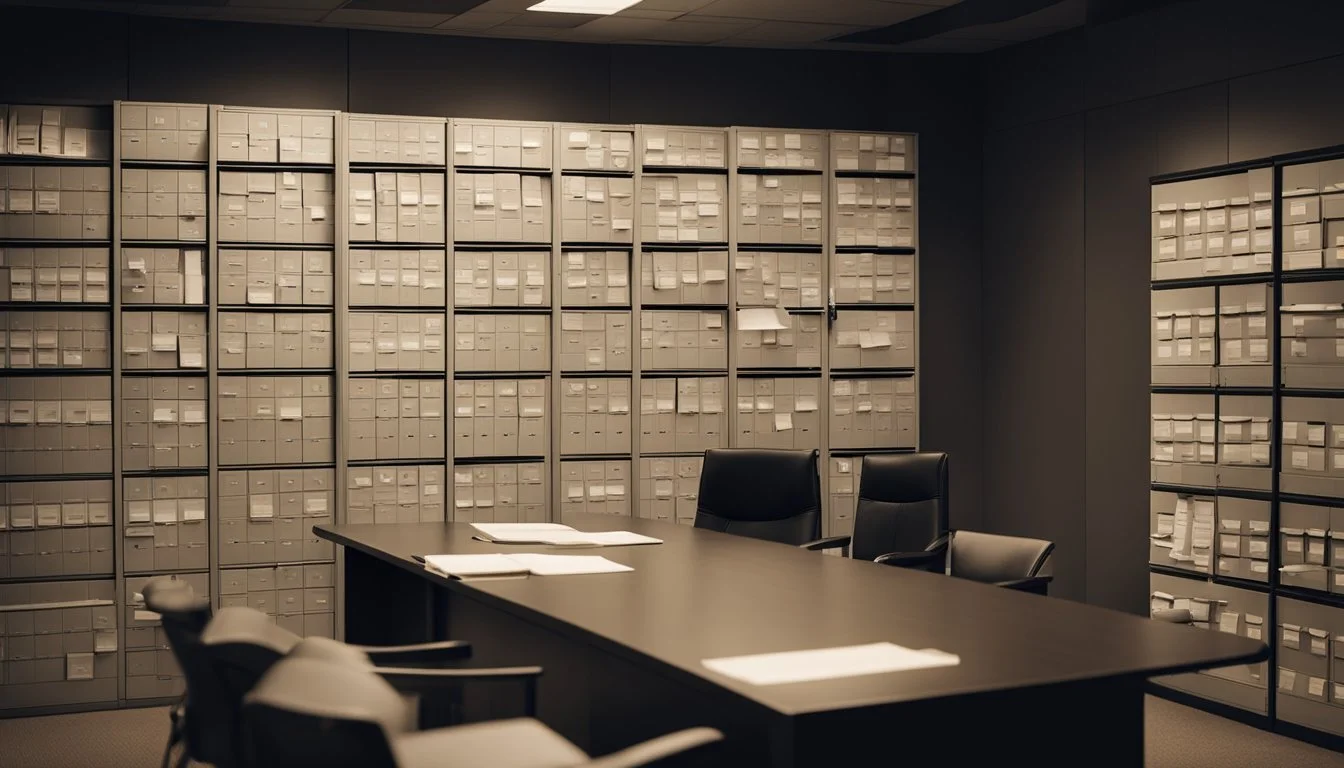Child Abuse Documentary Faces Distribution Hurdles Revealing Hollywood Industry Challenges
The Hollywood film industry, known for its glitz and glamour, harbors a dark underbelly that few dare to expose. "An Open Secret," a documentary directed by Amy Berg, attempts to shed light on the pervasive issue of child sexual abuse within the entertainment world. Despite its critical subject matter, the film faced significant distribution challenges, struggling to find a platform willing to showcase its controversial content.
The documentary features interviews with five former child actors who share their experiences of sexual abuse in the industry. It also delves into the case of Marc Collins-Rector, a convicted child abuser who co-owned Digital Entertainment Network, an early online video company. The film's release was met with resistance from distributors, leading to a limited theatrical run and eventual online release.
This distribution nightmare highlights the complexities of addressing sensitive topics in Hollywood. The film's struggle to reach audiences raises questions about the industry's willingness to confront its own demons and the power dynamics at play in suppressing uncomfortable truths. As "An Open Secret" continues to provoke discussion, it serves as a reminder of the ongoing need for transparency and accountability in the entertainment world.
The Making of 'An Open Secret'
'An Open Secret' emerged as a groundbreaking documentary exposing child abuse in Hollywood. Its production involved extensive research and interviews with industry insiders, survivors, and experts.
Behind the Scenes with Director Amy Berg
Amy Berg, an Oscar-nominated filmmaker, took on the challenging task of directing 'An Open Secret'. She conducted in-depth interviews with survivors of child sexual abuse in the entertainment industry. Berg faced numerous obstacles during production, including reluctance from potential subjects to speak on camera.
The director worked closely with a team of researchers to uncover court documents and other evidence. She also collaborated with child protection advocates to ensure sensitive handling of the subject matter. Berg's approach aimed to balance hard-hitting journalism with compassionate storytelling.
Involvement of Industry Insiders
Several former child actors and industry professionals contributed to the film's production. They provided firsthand accounts and insider knowledge of Hollywood's darker side. Some participants risked their careers by speaking out.
The filmmakers also sought input from talent agents, managers, and producers. This insider perspective helped illuminate the systemic issues enabling abuse. However, many industry figures declined to participate, fearing potential backlash.
Legal experts and child psychologists were consulted to provide context and analysis. Their involvement added credibility to the documentary's claims and recommendations for change.
Exposing the Predators
The documentary "An Open Secret" sheds light on sexual predators operating within Hollywood's entertainment industry. It profiles several alleged abusers and shares heartbreaking testimonies from victims.
Profiles of Abusers within the Industry
Marc Collins-Rector emerges as a central figure in the film's examination of Hollywood abuse. As the founder of Digital Entertainment Network (DEN), Collins-Rector gained access to young actors through lavish parties at his mansion.
The documentary also explores allegations against other industry figures. Director Bryan Singer faces scrutiny for his connections to Collins-Rector and DEN.
Gary Goddard, a producer and theme park designer, is another subject of abuse claims in the film.
These men allegedly used their power and influence to exploit aspiring young talent in Hollywood.
Testimonies from Victims
"An Open Secret" gives voice to several victims who bravely share their experiences. Young actors describe being invited to exclusive parties where they were plied with alcohol and drugs.
Some recount traumatic incidents of sexual assault and manipulation by older men in positions of authority. The victims express feelings of shame, fear, and powerlessness that kept them silent for years.
Their testimonies paint a disturbing picture of systemic abuse enabled by a culture of secrecy in Hollywood. The film suggests that many in the industry were aware of the abuse but chose to look the other way.
The Cycle of Abuse
Child exploitation in Hollywood involves complex patterns of manipulation and long-lasting consequences for young actors. Predators employ calculated tactics to gain trust, while victims often struggle with the impacts well into adulthood.
Grooming and Manipulation Tactics
Abusers in the entertainment industry often target child actors through a process called grooming. They build trust gradually, offering special attention, gifts, or career opportunities. Predators may isolate victims from family and friends, creating dependency.
Some tactics include:
Normalizing inappropriate behavior
Using industry influence as leverage
Exploiting young actors' dreams of stardom
Abusers frequently target young boys, taking advantage of their vulnerability and desire for mentorship. They may present themselves as trusted authority figures within the industry.
The Impact on Young Actors
Child actors who experience abuse often face severe emotional and psychological consequences. Many struggle with:
Depression and anxiety
Substance abuse issues
The trauma can derail promising careers, as some victims choose to leave the industry entirely. Others may stay but grapple with ongoing trust issues and fear.
Long-term effects can include PTSD, eating disorders, and challenges with self-esteem. Some former child actors report difficulty separating their abuse from their overall Hollywood experience.
Underage victims may not fully understand or process the abuse until years later, complicating the healing process. Support systems and therapy are crucial for survivors to break the cycle and reclaim their lives.
Challenges in Distribution
"An Open Secret" faced numerous obstacles in its journey to reach audiences. The documentary's controversial subject matter led to significant pushback from various quarters of the entertainment industry.
Controversies Surrounding Release Decisions
The film's release was met with resistance from Hollywood insiders. Major studios and distributors declined to pick up the documentary, citing its sensitive content. Independent theaters were hesitant to screen it, fearing potential backlash.
The producers struggled to secure widespread theatrical distribution. They resorted to limited releases in select cities, starting with a single theater in Los Angeles. This restricted approach severely limited the film's potential reach and impact.
Online streaming platforms also proved reluctant to host the documentary. Several digital distributors passed on the opportunity, further complicating efforts to make the film accessible to a broader audience.
Legal and Financial Hurdles
The filmmakers faced significant legal challenges. Threats of lawsuits from individuals mentioned in the documentary loomed large. These potential legal battles deterred some distributors from getting involved.
Financial backing became a major hurdle. Traditional funding sources within the industry were scarce. The producers had to rely on alternative means of financing, including support from a hedge fund manager who believed in the project's importance.
Insurance issues compounded the problems. Some companies were unwilling to provide coverage for the documentary due to its controversial nature. This lack of insurance made it even more difficult to secure distribution deals.
The absence of Hollywood offers meant the film had to navigate distribution channels without the support of established industry players. This lack of institutional backing severely limited its marketing and promotional opportunities.
Cultural and Systemic Issues
The entertainment industry's power dynamics and culture of silence have enabled child abuse to persist. Similar patterns emerge in other institutions, revealing systemic issues that extend beyond Hollywood.
The Role of Power and Silence in the Industry
Power imbalances in Hollywood create an environment where abuse can thrive. Aspiring actors, especially children, are vulnerable to exploitation by those in authority positions. The industry's competitive nature leads many to stay silent about misconduct, fearing career repercussions.
This culture of silence protects abusers and discourages victims from coming forward. Powerful figures often use their influence to suppress allegations and intimidate whistleblowers. The promise of fame and success can also lead parents to overlook warning signs or rationalize inappropriate behavior.
Comparisons to Other Institutional Scandals
The child abuse scandal in Hollywood shares similarities with other institutional cover-ups. The Catholic Church faced widespread allegations of child sexual abuse by clergy members. Both cases involved authority figures exploiting vulnerable individuals and institutions prioritizing reputation over victims' well-being.
Like the Church, Hollywood's elite often closed ranks to protect their own. The entertainment industry's response mirrors tactics used in other scandals: denials, victim-blaming, and attempts to discredit accusers. These parallels highlight a broader societal problem of institutions failing to address abuse within their ranks.
Legal Framework and Accountability
The legal system has struggled to address child sexual abuse in Hollywood effectively. Challenges remain in prosecuting offenders and protecting victims, despite some high-profile convictions.
Convictions and Legal Proceedings
Several individuals faced legal consequences for child sexual abuse in the entertainment industry. Marty Weiss, a former talent manager, pleaded no contest to two counts of child molestation in 2012. He served six months in jail followed by five years of probation.
Bob Villard, a Hollywood publicist and manager, was convicted on child pornography charges in 2001. He later pleaded no contest to committing a lewd act on a child in 2005.
Michael Harrah, a former child actor and talent manager, was accused of inappropriate behavior but never charged. He denied allegations of misconduct.
Safeguarding the Victims
SAG-AFTRA, the actors' union, implemented stricter regulations for the protection of child performers. These include mandatory background checks for talent representatives and on-set chaperones.
The Courage to Act Foundation works to prevent child abuse in the entertainment industry. They provide education, support services, and advocate for stronger legal protections.
Lawsuits filed by victims have helped expose abusers and push for industry reforms. However, many cases face challenges due to statutes of limitations and difficulties in gathering evidence years after the abuse occurred.
Educating the Public and Industry Response
Efforts to raise awareness about child abuse in Hollywood have faced challenges, but some progress has been made through education and advocacy initiatives.
Developing Awareness Programs
BizParentz Foundation, co-founded by Anne Henry, has taken a leading role in educating aspiring child actors and their families about the risks of sexual exploitation in the entertainment industry. The organization offers workshops and online resources covering topics like recognizing predatory behavior and reporting abuse. Some talent agencies have begun incorporating child safety training into their onboarding processes for young clients.
Production companies have started implementing stricter policies around interactions between adults and child performers on set. These include mandated chaperones and limits on one-on-one contact. However, enforcement remains inconsistent across the industry.
Advocacy for Change within Hollywood
Survivors of childhood sexual abuse in Hollywood have formed support groups and advocacy organizations. These groups push for stronger protections, increased transparency, and accountability for abusers. They lobby studios and unions to adopt more robust safeguards for child performers.
Some industry insiders have spoken out about the need for systemic change. A few high-profile actors and directors have used their platforms to call attention to the issue. However, many in positions of power remain reluctant to publicly address the problem.
Proposed reforms include creating an independent oversight body to investigate abuse allegations and establishing an industry-wide database of individuals with histories of misconduct involving minors. Progress on implementing such measures has been slow, hindered by legal concerns and resistance from some industry stakeholders.
Aftermath and Continuing Conversations
The release of "An Open Secret" sparked ongoing discussions about child safety in Hollywood and led to some concrete actions. While change has been slow, the documentary left a lasting impact on the industry.
The Legacy of 'An Open Secret'
The film brought renewed attention to the issue of child abuse in Hollywood. It amplified the voices of survivors like Evan Henzi, who shared his story in the documentary.
The film's difficult distribution process highlighted the industry's reluctance to confront the problem. Despite this, it reached audiences through online platforms and special screenings.
Some actors, like Corey Feldman, used the documentary's momentum to speak out about their own experiences of abuse. This helped keep the conversation alive in the media and public consciousness.
Ongoing Discussions and Measurable Impact
In the years following the film's release, Hollywood has taken some steps to address child safety. Several major studios and talent agencies implemented new policies and training programs.
The #MeToo movement, which gained traction in 2017, further amplified conversations about abuse in the entertainment industry. This broader reckoning included renewed focus on protecting child actors.
Some high-profile figures, including Leonardo DiCaprio, have used their platforms to advocate for stronger protections for young performers. However, critics argue that more comprehensive reforms are still needed.
The film's impact extends beyond Hollywood. It has been used as an educational tool in some child protection organizations and has informed policy discussions about safeguarding minors in the entertainment industry.






